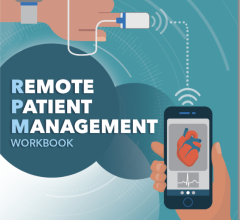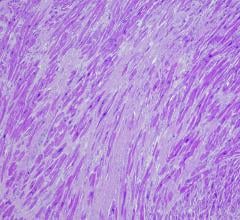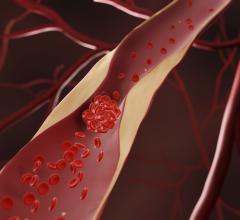
Getty Images
Most of us would like to think we don’t make snap judgments or hold preconceived ideas about people based on factors like race, religion or ethnicity, whether they are a man or a woman, young or old, wealthy or poor. But the fact is we are all hard-wired from the time we are children to be implicitly biased. That means we all have engrained attitudes or stereotypes about the people surrounding us without being conscious of it.
No one is exempt from implicit bias, not even the physicians and nurses who treat us. But that doesn’t mean we can’t work towards becoming more self-aware about the biases we all have. Gender bias is a good case-in-point. There have been numerous studies about the effects of gender bias on patient care. Conscious or unconscious gender, racial and ethnic physician bias is seen as a contributing factor to the under-prescription, under-referral and undertreatment of women with both coronary artery disease (CAD) and peripheral artery disease (PAD).1
Patient Experience for Women with Vascular Diseases is Sub-optimal
Women suffering from CAD or PAD — and especially women from underserved communities of color — are often the recipients of worse clinical outcomes. According to the most recent American College of Cardiology (ACC), American Heart Association (AHA) and Society for Cardiovascular Angiography and Interventions (SCAI) joint committee guidelines, women and non-white patients are less likely to receive cardiac catherization and more likely to have worse outcomes. Moreover, they are less likely to be recommended for cardiac catherization by their clinicians compared to white male patients, despite the same clinical guidelines.2
Recent Beyond Intervention research from Abbott3 aimed to uncover what the patient experience was like for those living with cardiovascular disease and/or peripheral artery disease. This global market research asked patients for greater detail on their circumstances; were they women? Did they have comorbidities like diabetes? Were they young or old? Did they consider themselves underserved, meaning they had difficulty affording things like medical care or transportation to and from their appointments? All of these factors played a role in their perceived quality of care.
The research revealed that women suffering from CAD and/or PAD reported a more challenging experience than their male counterparts in all surveyed factors related to access, emotional factors and relationships with their physician. Women especially struggle with finding a reputable physician, experiencing uncertainty and discomfort while waiting for an appointment, feeling overwhelmed in managing different conditions, underestimating, or not noticing their symptoms, and having other priorities that prevent them from seeking prompt medical attention.
There is well-documented evidence that physician bias is, in part, responsible for lower prescriptions of medical therapy and interventional treatment among women with PAD:4
- Women often present with atypical symptoms, which may result in delayed referrals and intervention, and higher rates of more complex disease.
- New statin prescription rates are lower for these women, consistent with prior studies demonstrating under-recognition and undertreatment of atherosclerotic cardiovascular disease in this population.
- Reasons for under-prescription among female PAD patients may reflect dismissal of symptoms given atypical presentation.
Prior studies have shown that women are less likely to survive cardiac disease when treated by male clinicians. However, when treated by female clinicians, there is no significant difference in outcomes between the sexes, presumably due to better vigilance for atypical symptoms, higher awareness of disease consequence in women, and resultant improvement in medical therapy.5 Some data appear to bear this out: a study of heart attack patients in Florida indicated improved survival for women who were managed by a female physician — although whether these data can be extrapolated to all forms of cardiovascular treatments and care settings has yet to be proven.6
Ways to Address Implicit Bias
So, if we know that women are feeling marginalized when it comes to their vascular care, and it is impacting their physical and mental well-being, then what can we do about it?
For starters we can improve clinical data that reflects greater representation of women, because right now it doesn’t. And we know that the results of clinical trials often play a huge role in determining how physicians respond to and treat various medical conditions. Recent research, however, reveals systemic underrepresentation of both women and minority populations in clinical trials.7
This is especially true when it comes to cardiovascular health; although heart disease is the leading cause of death for women in the United States, women account for only 38% of participants in cardiovascular clinical trials,8 despite representing about 50.5% of the US population.9
It’s important to identify the gaps in today’s existing data, like the gap in the number of women participating in clinical trials, and the clinical assumptions that are made as a direct result of that data. Physicians are growing more and more accustomed to using data generated by algorithms to inform their treatment decisions. The data sets for training artificial intelligence (AI) algorithms must have comprehensive and inclusive data sets — that means women’s health data needs to be statistically significant.
Investing in women-led health care companies is another way to ensure women’s health gets the attention it deserves. Making sure women have a seat at the table in large health systems and healthcare companies also ensures a woman’s views, perspectives and lived experiences are represented when decisions are made about all aspects of healthcare delivery, from the clinical trials previously mentioned, to the prioritization of funding for healthcare services and solutions.
A Path Forward
Improving patient care for women is about conscious inclusion — making conscious choices to include women in clinical studies as both patients and the principal investigators who do the research, giving women a seat at the decision-making table, showing empathy for women by actively listening and finding ways to accommodate them so they can receive the best care on their terms.
Achieving greater gender equity in healthcare is about making systemic changes on a comprehensive scale. It is unrealistic to expect this change will emerge as a grassroots movement — the vision and mission of gender equity in healthcare needs to come from our leaders across the entire healthcare spectrum. Policies, programs and practices need to change to better reflect the needs of our diverse society and that can only happen if there is the will to do so.

Jennifer Jones-McMeans, Ph.D., is the divisional vice president, global clinical affairs for Abbott’s vascular business based in Santa Clara, Calif. Since joining Abbott as a clinical research scientist nearly 14 years ago, she has worked on gaining approval of numerous vascular devices, in the United States and around the world. Jones-McMeans has led many clinical trials, including those for resorbable technologies designed to treat cardiovascular disease and peripheral arterial disease, the latter of which disproportionately affects, African American, Native American and Latino communities. Through her work, she has become one of the leading experts in clinical trial design strategy for vascular devices.
References:
[1] Lawton, et al., “ 2021 ACC/AHA/SCAI Guideline for Coronary Artery Revascularization: A Report of the American College of Cardiology/American Heart Association Joint Committee on Clinical Practice Guidelines,” Circulation. 2021; 144:00-00.
2 Lawton, et al., “ 2021 ACC/AHA/SCAI Guideline for Coronary Artery Revascularization: A Report of the American College of Cardiology/American Heart Association Joint Committee on Clinical Practice Guidelines,” Circulation. 2021; 144:00-00.
3 Abbott’s survey – “Beyond Intervention: Improving Patient Experience by Addressing Unmet Needs in Vascular Disease” – explores the differing perceptions and experiences of 1,289 people suffering from vascular disease (CAD and PAD) across 13 countries, along with those of 408 physicians and 173 administrators.
4 Singh, et al., “Prescribing of Statins After Lower Extremity Revascularization Procedures in the US,” JAMA Network/Open, 2021
5 Samantha DiGrande, “Women More Likely to Survive Heart Attacks When Treated by Female Physicians,” The American Journal of Managed Care, August 31, 2018
6 Samantha DiGrande, “Women More Likely to Survive Heart Attacks When Treated by Female Physicians,” The American Journal of Managed Care, August 31, 2018.
7 Yates, et al., “Representation in Clinical Trials: A Review on Reaching Underrpresented Populations in Research,” Clinical Researcher, August 10,2020
8 Yates, et al., “Representation in Clinical Trials: A Review on Reaching Underrpresented Populations in Research,” Clinical Researcher, August 10,2020
9 “Population, Female (% of Total Population) – United States,” The World Bank, 2020
Related Women's Heart Health Content:
Diagnostic Differences in Women’s Heart Health
VIDEO: Differences in Cardiac Complications and Presentation Between Men and Women — Interview with Cindy Grines, M.D.
DAIC's Women's Cardiovascular Health Channel
VIDEO: How to Build a Successful Women’s Heart Center — Interview with Malissa Wood, M.D.
VIDEO: Creating a Cardio-Obstetrics Team — Doreen DeFaria Yeh, M.D.
Related Content on New Technology and Ideas to Address Health Disparities:
VIDEO: New Ideas in Addressing Cardiovascular Disease Disparities — Clyde Yancy, M.D
VIDEO: How Smartphones May Revolutionize Healthcare in the Developing World —Interview with Jacques Kpodonu, M.D.
VIDEO: Reducing Hypertension Among African-Americans — Interview with Kim Allan Williams, Sr., M.D.
VIDEO: New PLATINUM Diversity Data Shows Early DAPT Cessation OK in Minorities With New Generation Stent — Interview with Roxana Mehran, M.D., where she explains how trials can be designed to better include minorities.
VIDEO: Use of Wearable Medical Devices for Cardiac Rehabilitation — Interview with Robert Klempfner, M.D.
VIDEO: Use of Wearables to Track Electrophysiology Patients — Interview with Khaldoun Tarakji, M.D.
COVID-19 Cardiovascular Registry Details Disparities Among Hospitalized Patients
Study Finds Removing Cost from Calcium Score Testing Increased Utilization
Blacks Have Higher Mortality After PCI
Link Shown Between Economic Disparities and Cardiovascular Death in Middle-Aged Adults
VIDEO: Using an iPhone to Perform a Cardiac Ultrasound Exam


 July 31, 2024
July 31, 2024 








